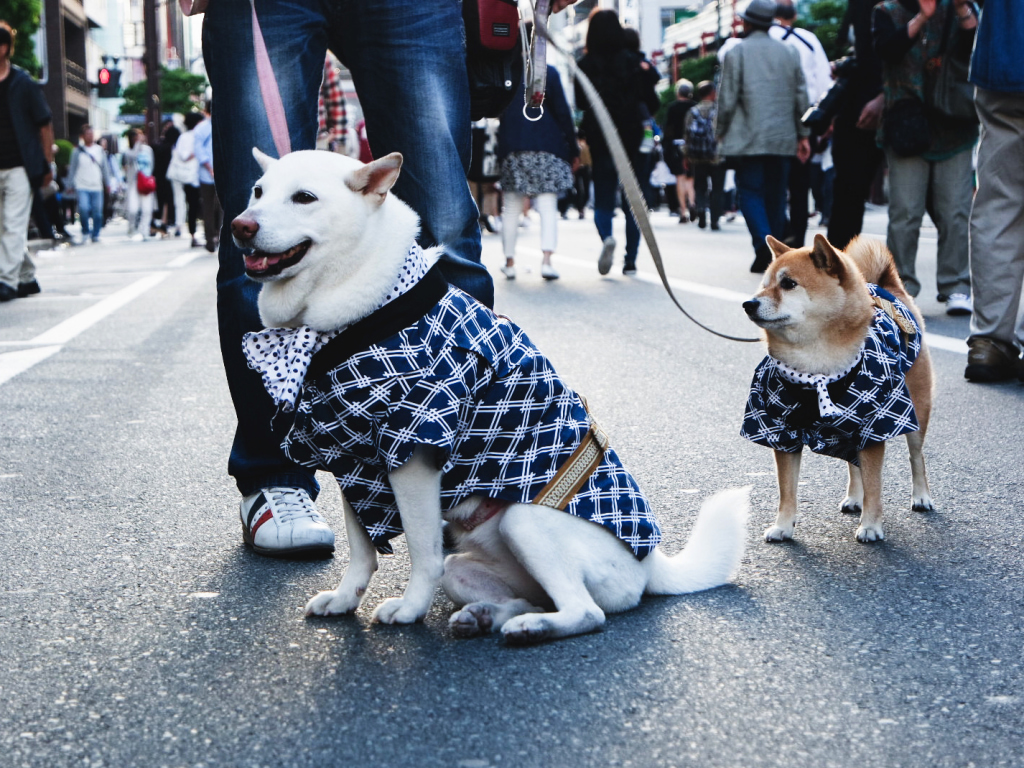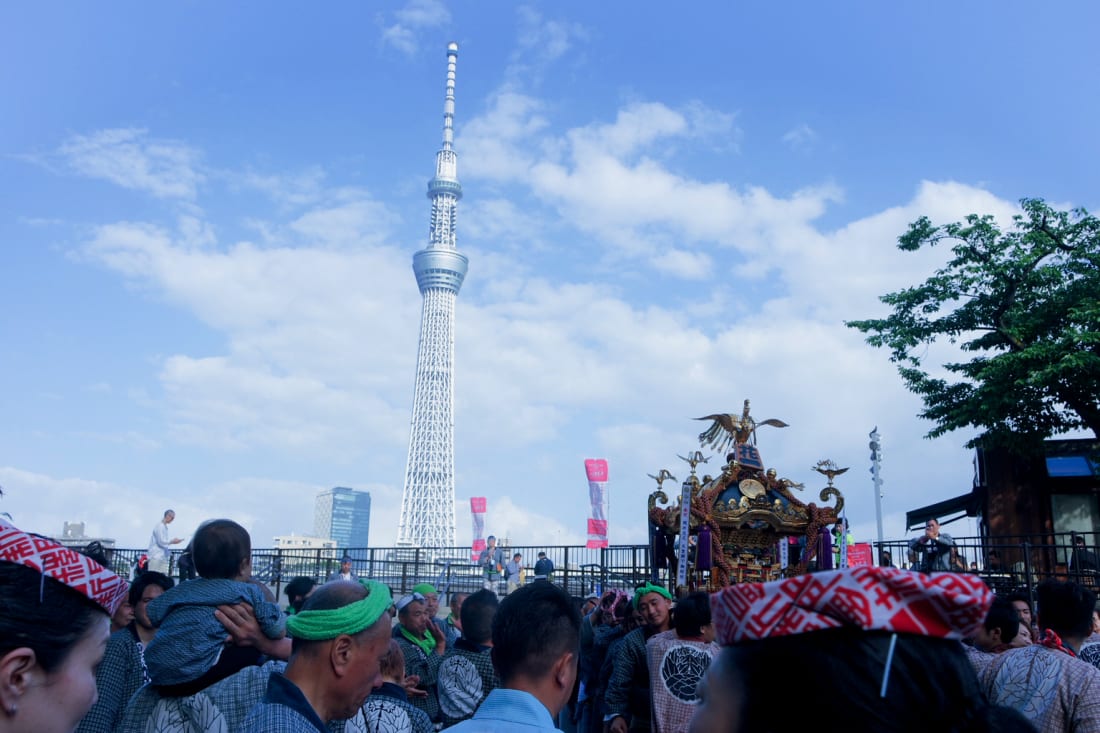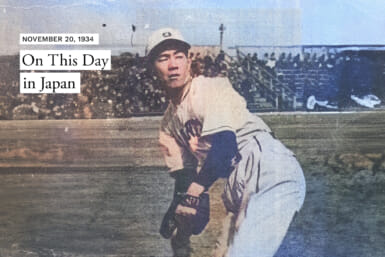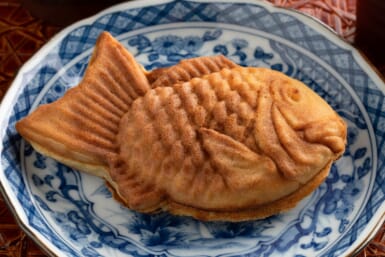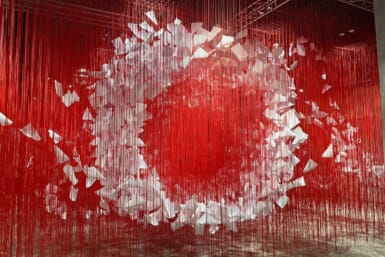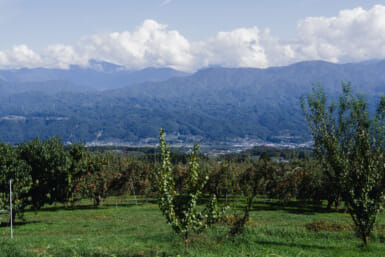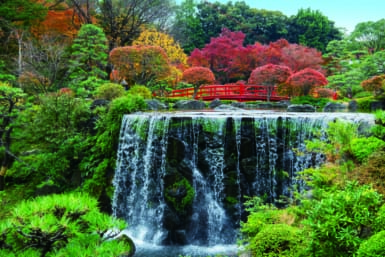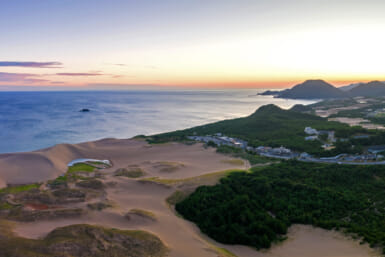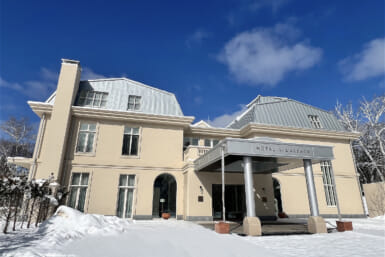The Shinto spirit and the party spirit perfectly align on the third weekend of May every year in Tokyo’s Asakusa district when the three-day Sanja Matsuri festival is held to honor the three men that centuries ago pulled a Kannon statue from Sumida River. And the ‘threes’ don’t stop there – the Sanja Matsuri is centered around the three main portable shrines, called mikoshi, .
In total, the boisterous festival has more than a hundred more mikoshi, traditional music and dance performances and almost 2 million visitors, making it well-deserving of its reputation as one of the three great Shinto festivals in Tokyo. It’s fun, crowded, rowdy, free, intense and quintessentially Japanese. Here are some highlights from this year’s Sanja Matsuri.
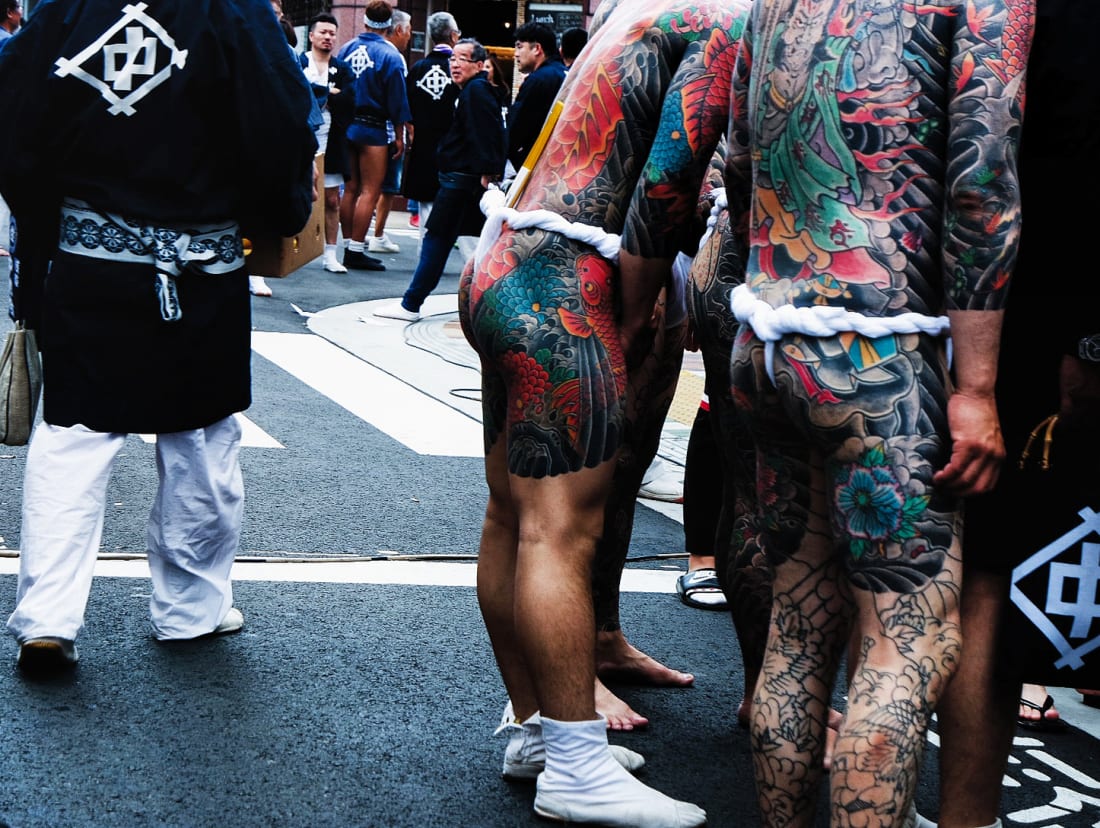
Photo: Zoria Petkoska
Irezumi Tattoos On Full Display
Irezumi is the traditional Japanese style of elaborate body art, and one of the biggest draws of this festival is the rare chance to see the taboo tattoos as participants strip down to only fundoshi, or some form of underwear, and pose for photos. As Japan’s relationship with these tattoos is problematic, people tend to cover them up most of the time and they are banned from most hot springs, gyms and swimming pools. This is because many yakuza members are tattooed, but during Sanja Matsuri the accent is on the art and the festival itself. The tattoos have many recurring patterns and traditional motifs like dragons and koi fish, but one of the tattooed women we met proudly showed us her inconspicuous Doraemon and Waldo tattoos.
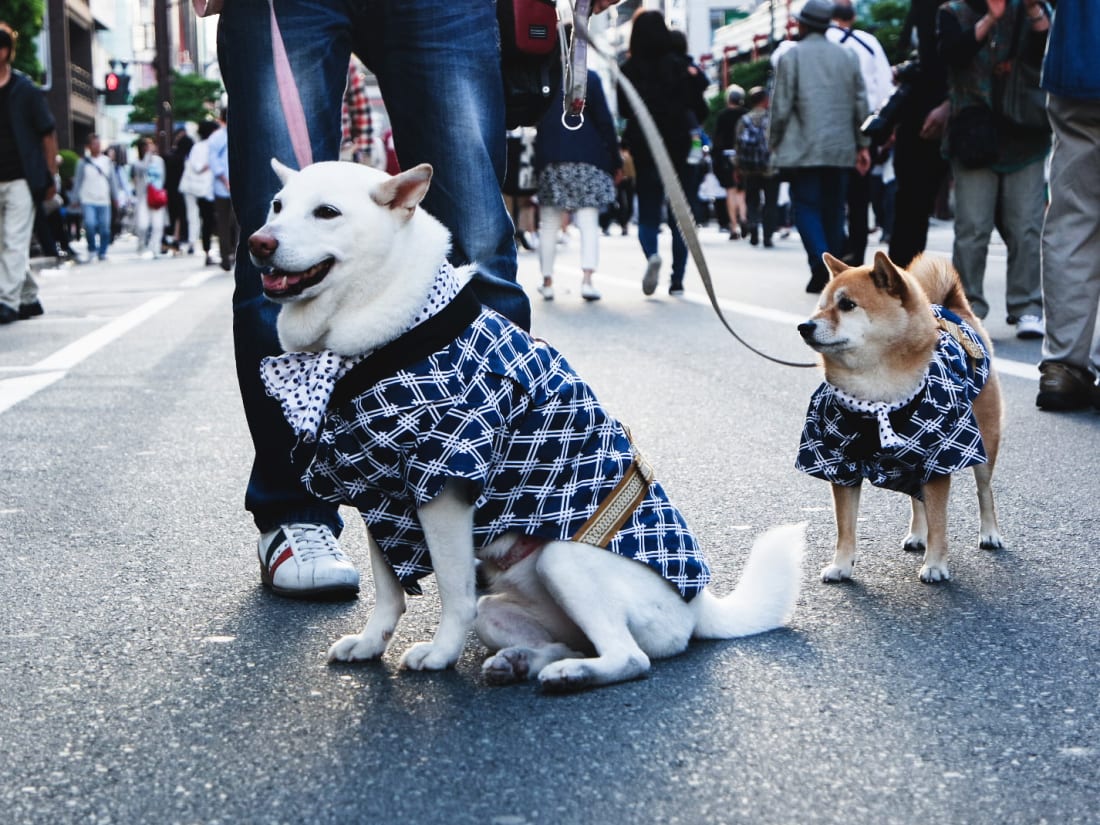
Photo: Zoria Petkoska
Matsuri Couture: Fundoshi and Hanten
There is no strict dress code for spectators, but active participants in a matsuri sport several traditional pieces of clothing. The Shitamachi area around Senso-ji temple is divided up into chokai, or neighborhood associations, that carry around their own mikoshi and wear their own hanten coats with distinctive design.
Around the edges of the procession are several people in purple hanten. These are basically uniforms signifying the special role of crowd-controllers, and are not handed to just anyone. Hanten are worn by both men and women, but also children and even pets. We spotted several dogs wearing cute custom-made matsuri outfits – with one pup parading an outfit with the famous Senso-ji red lantern printed on it.
Another staple of matsuri wear, and one that turns the most heads, is the fundoshi, a revealing piece of underwear resembling a loincloth, or G-string. Fundoshi can be combined with a hanten coat, but stripping down to only the fundoshi is OK too. Hey, it’s matsuri time, so a lot is allowed, just like at any carnival.
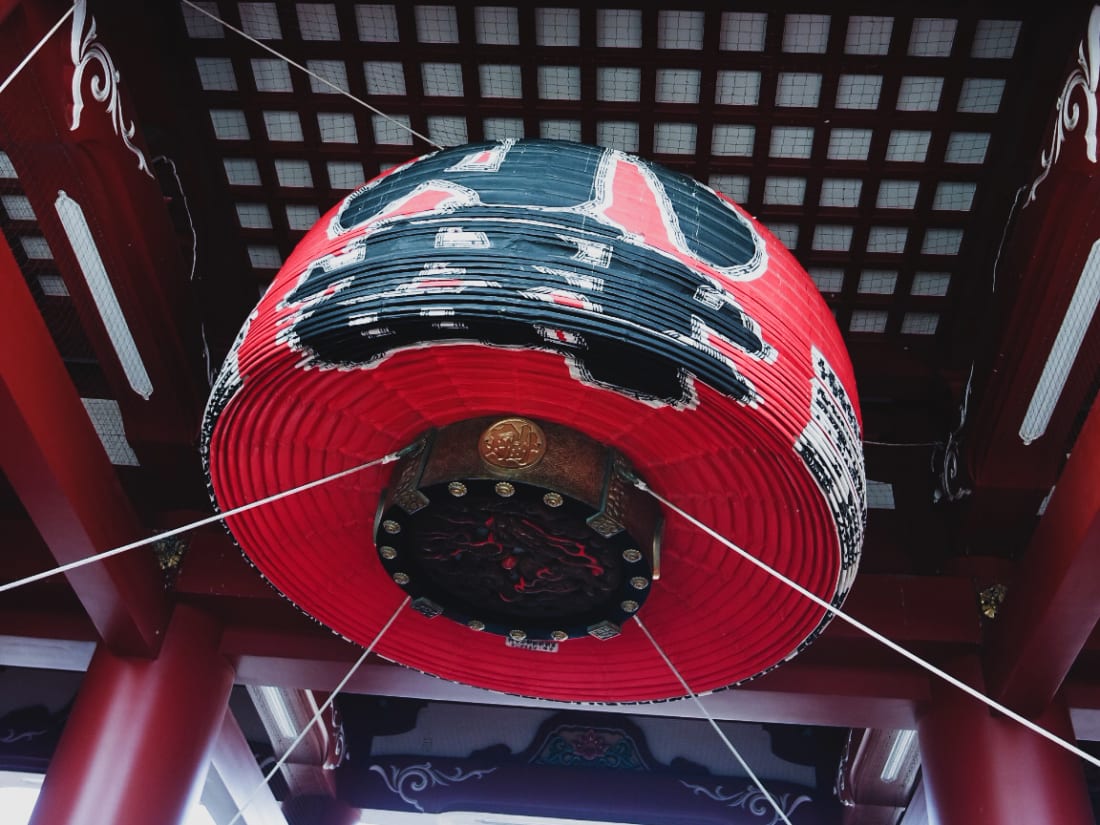
Photo: Zoria Petkoska
The Senso-ji Lantern
The giant red lanterns are an iconic symbol of Senso-ji temple, especially the Kaminari-mon lantern. During Sanja Matsuri, the lanterns are raised and partly collapsed and squished so that the big mikoshi can pass through the gate. It’s definitely a rare sight and some people are surprised to see that the valuable lantern can be as flexible as an accordion.
Lunch on the Streets
Yatai stands, or street food stands, are a staple of any matsuri and naturally there was a great selection of them around Senso-ji temple. However, the locals of the area who carry the mikoshi approach lunch a bit differently. People bring out homemade food and sit down on the streets for an urban picnic as the occasional car squeezes past them. The picnic resembles a spring cherry blossom picnic, and a similar sight can be witnessed in the same Sumida area during the iconic Sumida River Fireworks in summer. While sharing a cup of Japanese sake, an elderly local tells us that bonding over food and drinks like this is the real spirit of any matsuri. We couldn’t agree more.
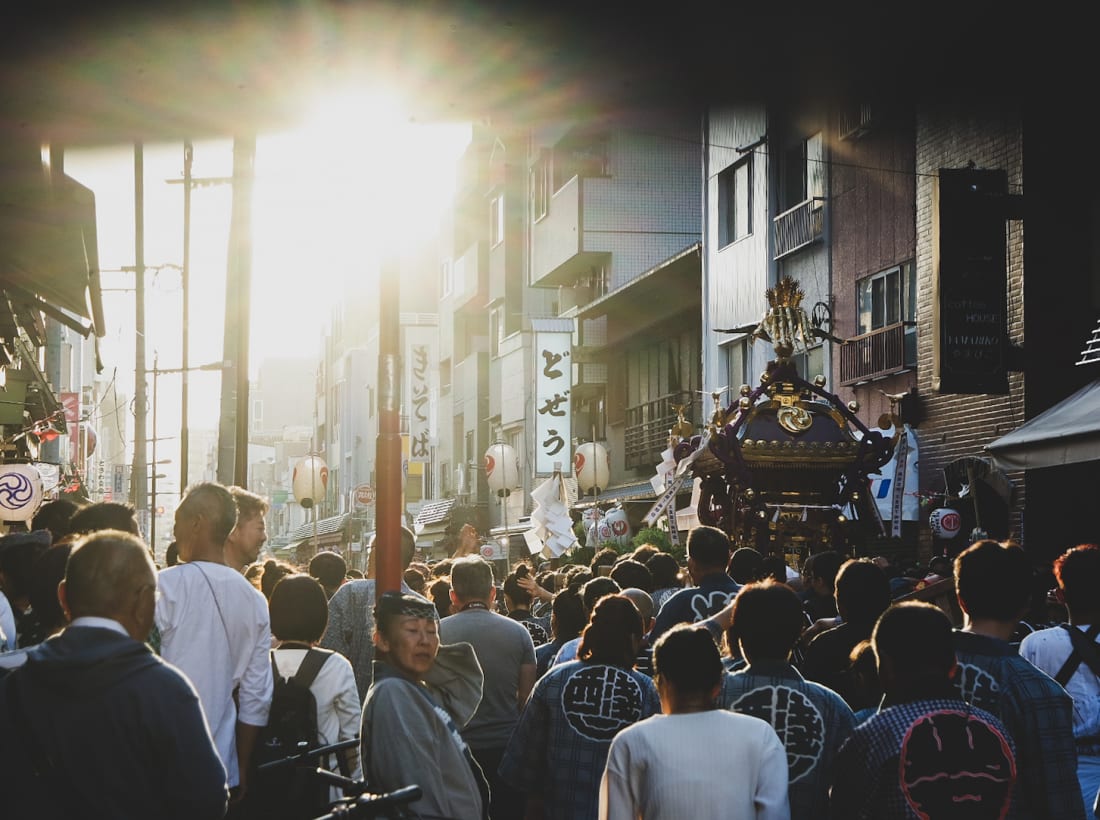
Photo: Zoria Petkoska
Women-Only Mikoshi
One of the chokai with the heaviest mikoshi at Sanja Matsuri also has a custom that at one point only women carry the load. This is to showcase the strength and involvement of the women in the community and it’s incredibly important, especially when you learn that in Shinto tradition women used to be banned from carrying the mikoshi. The fierce ladies of Sanja Matsuri shoulder the burden of the mikoshi together with the men during the whole festival.
Skytree and Sanja Matsuri Juxtapositions
The absence of skyscrapers in the Shitamachi Asakusa area means the Tokyo Skytree is visible from everywhere, allowing for some great views that show the contrast between old and new. The centuries-old Sanja Matsuri is usually depicted in art without a Skytree, as it was completed in 2012.
Honorable Mentions
• It’s not every day that you see a Shinto priest on a massive horse, but that’s exactly what happened on Hoppi Street at one point. Roaming the alleys around Asakusa, we also witnessed another person celebrating Japanese culture, but instead of traditional culture, they opted for a more modern idol – Pikachu. Lastly, to mark the historic new era in Japan, one of the local mikoshi was adorned with Reiwa symbols.
• By dusk on the last day of Sanja Matsuri, most of the mikoshi are returned to storage and everyone works to clean up the streets. Yet the air still crackles with excitement. When you look deeper into Edo culture, it becomes clear why this specific matsuri is such a celebrated festivity. The Shitamachi locals have long been known to be fun, friendly and welcoming. Living up to that, the locals I just met on the streets tell me: “Come back next year and bring more friends!” I definitely will.

